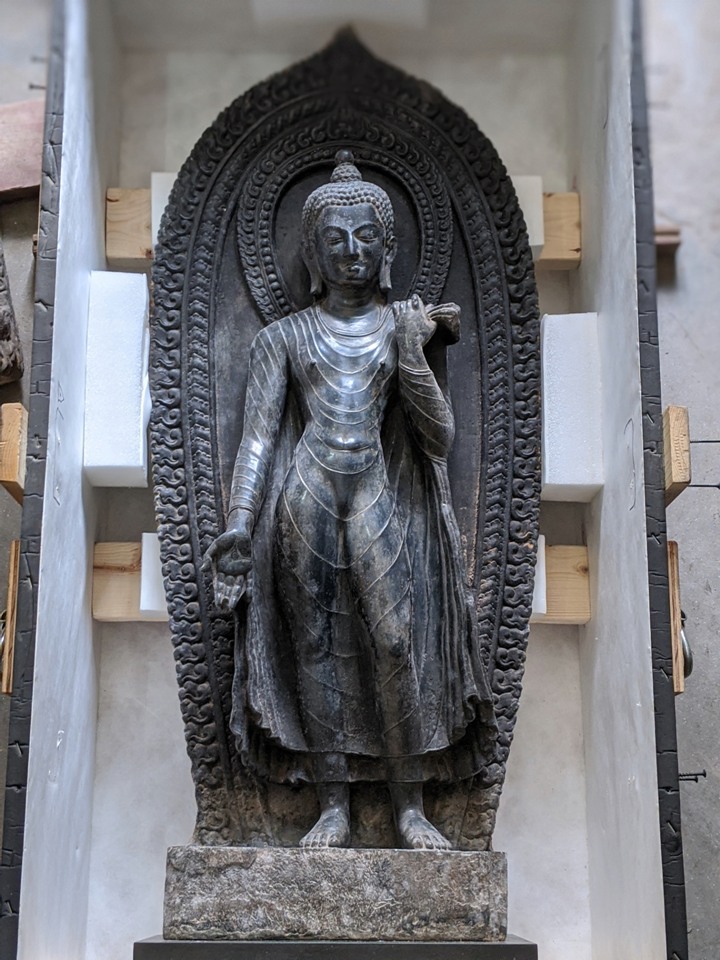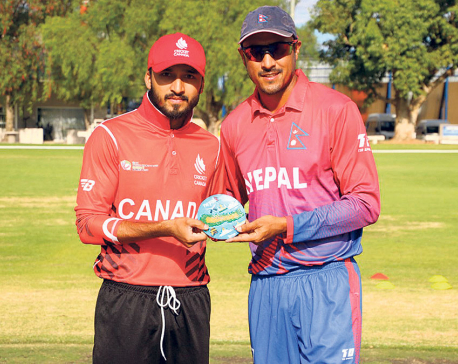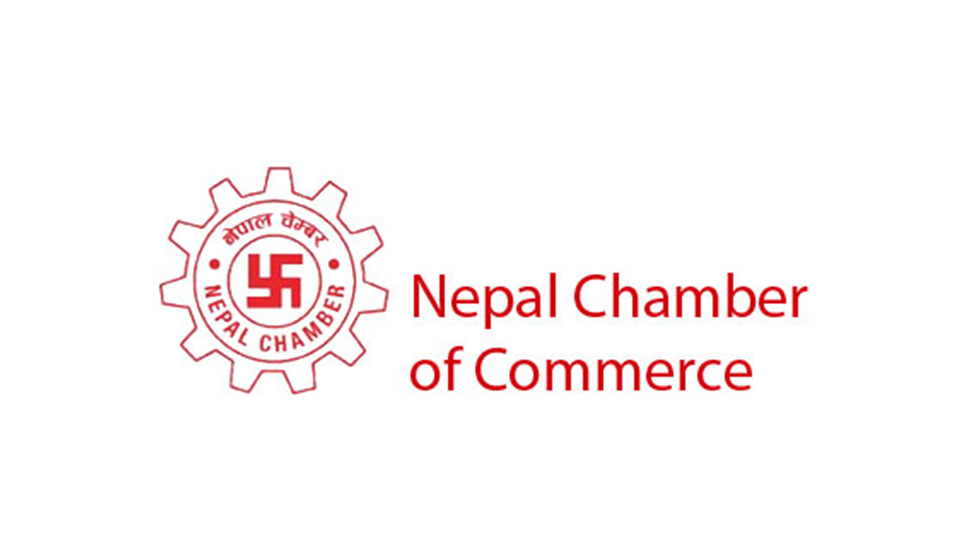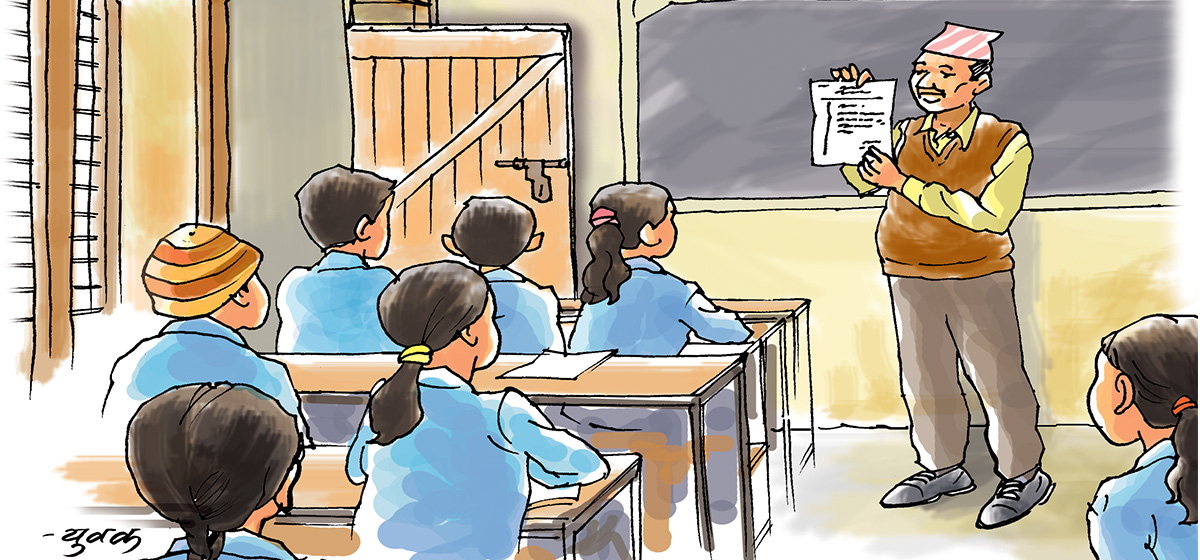
OR
UNESCO’s role in the fight against illicit trafficking of cultural property
Published On: November 14, 2020 08:29 AM NPT By: Christian Manhart

There are more Nepali artworks around the world waiting to be brought back, such as three pieces of a 300-year old ancient pauwa art stolen from Itumbahal in Kathmandu in 1979.
Art theft and illicit trafficking of cultural property is a crime. The International Convention Against Illicit Traffic of Cultural Property, which celebrates its 50th anniversary this year, was adopted by the UNESCO General Conference in 1970, and provides a framework for theft prevention and the return and restitution of stolen cultural property. To date, 140 countries have ratified the Convention, including those of great significance in the world’s art markets, whether importers or countries of origin: Nepal, Russia, the US, France, Australia, Germany, Canada, Italy, Japan and the UK.
The 1995 Convention on Stolen or Illegally Exported Cultural Objects complements the 1970 Convention in the fight against illicit trafficking and UNESCO encourages Nepal to become a signatory of this instrument as well.
UNESCO and its partners have developed many practical tools to prevent, raise awareness of and encourage the fight against illicit trafficking. UNESCO emphasizes greater awareness amongst police, customs officials and other people who may be unwittingly and thereby innocently involved.
Jointly with the Ministry of Culture, UNESCO organized an international symposium in 2013, which focused on collaboration and restitution, bringing together 80 national experts and 20 international speakers from Asia, Europe and the US, as well as partner organizations from the art world—Interpol, UNIDROIT, UNODC, MuseeGuimet and Christie’s Auction House. This gathering made recommendations on the best use of international frameworks and strategies for the return of cultural property to its place of origin.
In 1978, the UNESCO Intergovernmental Committee for Promoting the Return of Cultural Property to its Countries of Origin or its Restitution in case of Illicit Appropriation (ICPRCP) was created. Many cases have been resolved around the world since it was set up. Some examples include the Makonde Mask returned from the Swiss Barbier-Muller collection to the National Museum of Tanzania and the Bogazkoy Sphinx from Germany to Turkey. The Uma Maheshwor and Buddha stone statues stolen in the 1980s were returned to Nepal from the Metropolitan Museum of Art, New York, USA in 2018.
However, there are more Nepali artworks around the world waiting to be brought back, such as three pieces of a 300-year old ancient pauwaartstolen from Itumbahal in Kathmandu in 1979, in spite of efforts by Nepal’s Department of Archaeology, Interpol Nepal and the local community.
Nepal’s 2010 Culture Policy mentions preparation of inventories for movable artefacts and their return from museums, art galleries and individual collections. Similarly, the 1956 Ancient Monument Preservation Act includes provisions for restriction on exchange, purchase, sale, export, import and collection of cultural objects of archaeological value. However, due to lack of a comprehensive inventory and coordination, there is a great threat of illicit trafficking and restitution remains a challenge.
Nepal suffered the greatest loss of its art objects from the 1960s to the 1980s, and though this has declined in recent times, it has not stopped completely, especially from remote areas and unattended monasteries. Publications such as The Stolen Images of Nepal by Lain Singh Bangdel (1989) and The Gods are Leaving the Country by Jurgen Schick (2006) chronicle art objects lost from the 1960s to the 1980s.
The best means to protect and recover stolen objects are proper inventories, which are lacking in many countries around the world, including in Nepal. UNESCO advocates in favor of establishing complete documentation of all art objects in museums, temples, monasteries, palaces and private houses, and stands ready to assist.
Today, 14 November 2020, on the first International Day against Illicit Trafficking in Cultural Property, let us join hands to draw more attention to this crime and find ways to combat it, as well as highlight the importance of international cooperation and proactive measures through the Convention.
The author is UNESCO Representative to Nepal.
You May Like This

Miracle innings by Karan KC puts Nepal one step closer to World Cup
KATHMANDU, Feb 15: A sensational innings by all-rounder Karan KC, who smashed unbeaten 42 runs off 31 deliveries including three boundaries... Read More...

United World Schools begins Nepal Teaching Fellowship
KATHMANDU, May 23: The Nepal Teaching Fellowship, 2017 of United World Schools (UWS) officially inaugurated on Monday in a special event... Read More...

SCOPE Nepal provides foil blankets to Nepal Army
KATHMANDU, Jan: SCOPE Nepal, an NGO working in peace, security, environment and social justice, handed over 378 emergency foil blankets to... Read More...







Just In
- Shrestha nominated as Chairman of NCC's Advisory Council
- Take necessary measures to ensure education for all children
- Nepalgunj ICP handed over to Nepal, to come into operation from May 8
- Nepal to gift two elephants to Qatar during Emir's state visit
- NUP Chair Shrestha: Resham Chaudhary, convicted in Tikapur murder case, ineligible for party membership
- Dr Ram Kantha Makaju Shrestha: A visionary leader transforming healthcare in Nepal
- Let us present practical projects, not 'wish list': PM Dahal
- President Paudel requests Emir of Qatar to help secure release of Bipin Joshi held hostage by Hamas




_20240423174443.jpg)







Leave A Comment